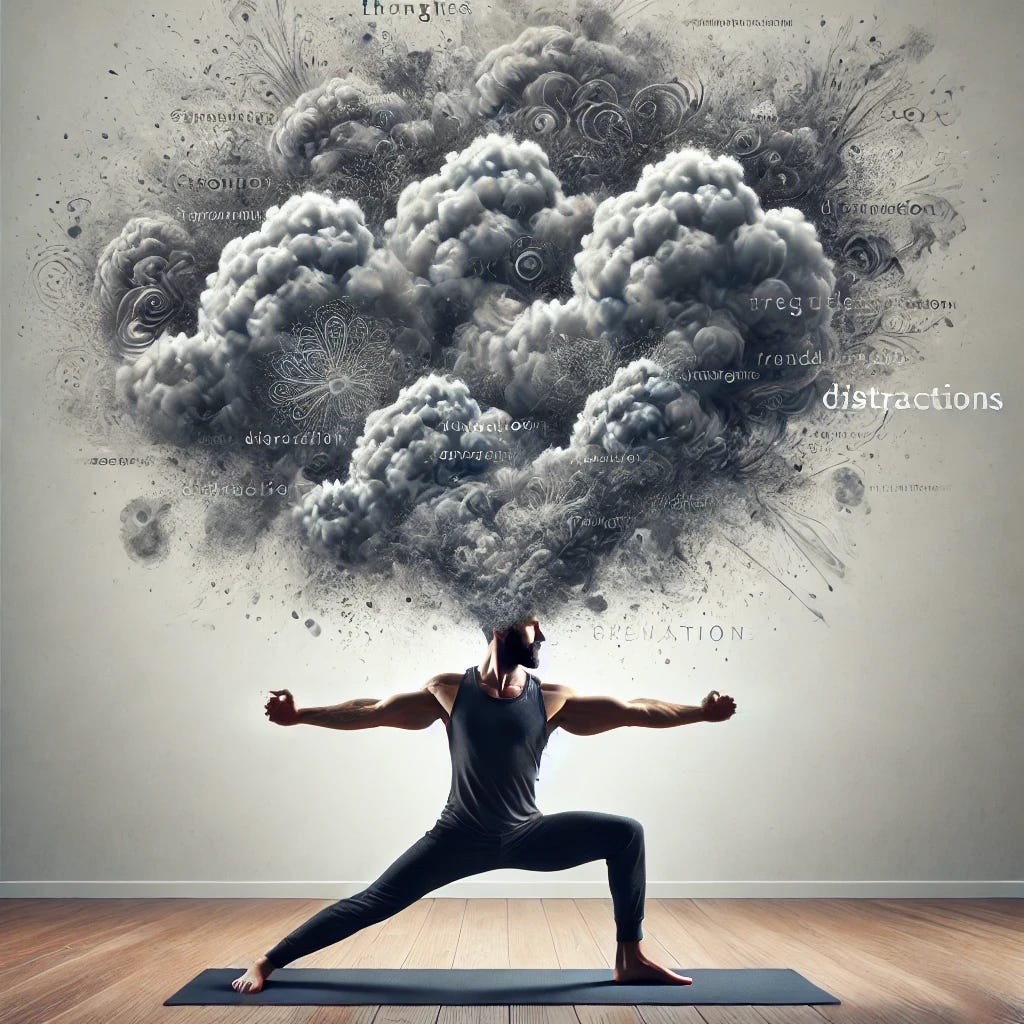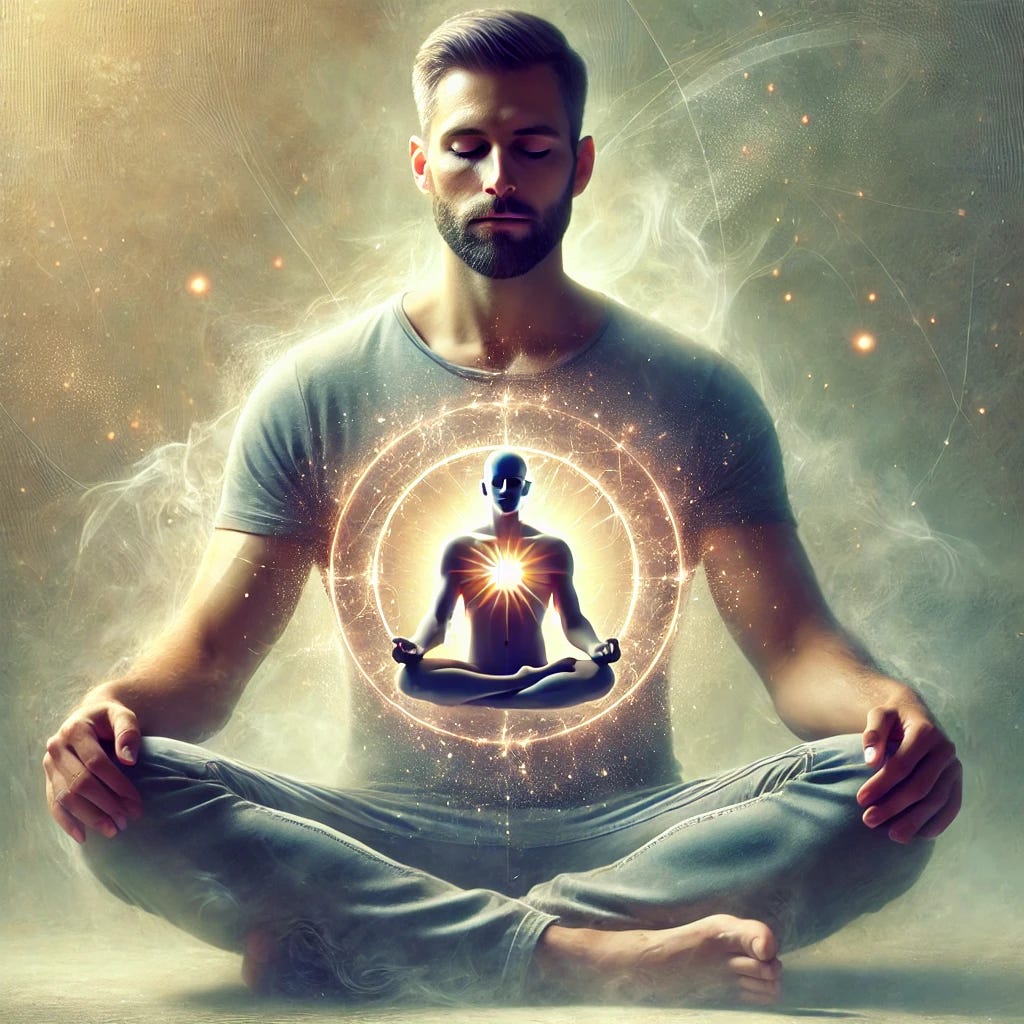You Can’t Love What You Don’t Know
Why a direct approach to self-love doesn’t work
When I began practicing yoga in California studios, I frequently came across teachers encouraging practitioners to “send love” to themselves. Usually it was the end of the flow during savāsana, or just before it.
Honestly, it confused the hell out of me at the time.
I grew up in New England, where Puritan thought still subtly underpins much of the local culture. If you’re not familiar with the Puritans, they were the “pilgrims” who left Europe in the 1600s, seeking freedom from religious persecution (which was evidently bad enough to jump on a rickety wooden ship called The Mayflower and make the harrowing Atlantic crossing to literally build a new society from the ground up).
It’s actually not that crazy when you realize that the Puritans were actually a bunch of serious hard-o’s who thought the Church of England was “too Catholic” and ought to eschew even more of the opulence that the Protestants had already dropped since breaking from Rome in the early 1500s.
I’ll sum up the Puritan attitude in two lines —
“Idle hands are the Devil’s workshop”
Self-denial = the way to spiritual enlightenment
Now, I was never truly a “Puritan”, by any means. I spent plenty of time in recreation as child, and I was allowed to have candy when I wanted it without fear of eternal damnation.
But whether by a centuries-old cultural influence, or just from the consistently bad weather, the people around me were generally miserable most of the time. It was simply the norm.
“Hey, how’s it going?”
“Same shit, different day.”
That’s pretty much the extent to which most conversations went. There are obviously plenty of exceptions and contravening variables to consider (the socio-economic level of my surroundings, historical context, etc.) but really all I’m trying to explain is that the more or less normalized concept of “self-love” with which people here in San Diego seem more or less familiar, was very foreign to me.
So perhaps you’ll write off the critique I’m about to provide as biased, or maybe just the sad ramblings of one afflicted by old-world sensibilities — but in a sense, my separateness to this concept qualifies me to comment on it with more incisiveness.
Even though I pretend to be a yogi (and we pretend to have ‘control’ over our thoughts), most of the time I’m completely lost in my thoughts. Years ago, when young Jack was told send himself love, some of those thoughts included:
send love…well, what’s my self’s address?
actually…what is my self?
do I even know what love is?
does my self deserve love?
am I my self?
A few years of living out here in Southern California were plenty to confirm that I’m not the only one confused about this concept…albeit in different ways.
I don’t think I’m going out on much of a limb to say that many people here have conflated the idea of self-love with self-ishness, and in the worst cases, use it as a justification for pure narcissism. That “me first” mentality isn’t at all unique to SoCal, but I do feel that in this area we have a strong prevalence of one of its most truly offensive offspring —
Self-centered spirituality.
I made that term up, but it won’t take more than a sentence to explain what it is and why it’s so objectively heinous:
The self-centered spiritualists are the ones who did Copernicus dirty and placed their ‘selves’ (back) at the center of the universe, essentially winding back centuries of progress in human thought since the arrival of heliocentrism.
It’s a slippery bugger of an ideology, but you know it when you see it.
Existing in the relative material wealth that is modern day society, they tend to treat spirituality as another item to consume…or, even worse, are taught to think of it as a means to achieve whatever additional material wealth they feel that they are entitled.
The yoga community, however vaguely spiritual it might still claim to be in places, is deeply infiltrated with this ideology.
We wrap ourselves tightly in $300 worth of plastic-filled clothes, that exist basically forever in landfills, in order to appear lean and fit, or to ‘perform’ better. As we flow, we stare at ourselves the mirror (when we aren’t peeking at our neighbors versions of $300 clothing) and base our preference of instructor on how much we enjoy the sounds they play on the studio speakers. After all this, we walk away with a sense of peace and pride for having spent time improving ourselves.
Yes, I’m being harsh. Yes, many that go to yoga classes are just going for the fitness benefits, and probably don’t know about the 8 limbs, and would be confused if I presented yoga as a path towards enlightenment.
But I just can’t help myself when the very antidote to that self-centered spiritualism is sitting there in plain sight. We are toying with it, like prisoners playing catch with the key to their cell door.
Though it’s treated as another means of self-improvement, yoga truly offers us a way out of the individualist’s trap.
The Yoga Sutras of Patanjali don't explicitly mention "self-love". What they do detail is a practice for cultivating self-awareness, self-understanding, and inner peace.
These are foundational to real self-love.
Not the kind of self-love that you throw into the stirred pot of your personality like salt and seasoning. That “me time”, where you really just separate from the set of responsibilities you have and wrap yourself up in a cozy set of baseless beliefs that you deserve to have everything you want (and more)…
I’m talking about compassion. I’m talking about forgiveness. The kind of self-love that sees the totality of your being — the parts you’re proud of, along with the ones you aren’t — and gives that being space and time to develop. The kind that ultimately gives, rather than takes.
Recognizing those capacities within oneself takes effort.
It takes time and understanding, years and years of observation and introspection. It’s not something one can just “do” (like the yoga teachers I referenced imply by their instruction). But if they spoke the truth, that it takes a shit load of effort and pain and suffering to become truly capable of self-love, nobody would listen anyways.
We all want the shortcut.
But there are no shortcuts in yoga. There is really just work, and the continual struggle to arrive in the present moment, where all things are ultimately occurring.
Patanjali gives us several guidelines, recognized within the first two limbs of yoga (the Yamas and Niyamas), that help create the conditions for cultivating a real and grounded self-love.
Svadhyaya (self-study): This is one of the Niyamas (observances) encouraging self-reflection and self-awareness.
Santosha (contentment): Another Niyama that promotes acceptance of oneself and one's circumstances.
Ahimsa (non-violence): This Yama encourages compassion and kindness towards all beings, including oneself.
Aparigraha (non-possessiveness): This Yama teaches us to let go of attachments, including negative self-perceptions or unrealistic expectations of ourselves, fostering a more accepting relationship with our being.
Ishvara Pranidhana (surrender to a higher power): This Niyama encourages us to recognize our place within a larger universe, helping to cultivate humility and reduce ego-driven self-criticism.
These principles essentially form a guide to developing a positive relationship to oneself.
And that relationship is the connection through which any intention (love or otherwise) ultimately flows.
Yoga is effectively the practice of developing an understanding of the inner experience (physical, mental, or otherwise) by directing the attention around the distinct areas of your being.
When we take warrior 3 (virabhadrasana III) and notice how the outside hip lifts because the inside hip is pulled down by tightness in the standing hamstring, or when we watch the mind jump around, desperately seeking a more comfortable state than chair pose (utkatasana) — we are developing a self-knowing through simple observation.
From that knowing, relationship can evolve (relationship defined as the give and take and adjustment that occurs as things change and evolve, as they always do).
And through that relationship, love can flow.
One of the most basic ideas underlying our approach to a traditional yoga-asana practice is that when you are experiencing tightness and contraction in one area of your body, the best strategy for creating lasting freedom and space in the area is not necessarily stretching that area.
Yoga recognizes the body as a system of interconnected parts, each depending on the other in some way, and therefore they are affected by the state of the others (tight, loose, weak, strong).
So when we want to address tightness and pain in the lower back, we loosen the hamstrings and quadriceps first. Otherwise, any space we might create in the low back will be quickly erased by the misalignment of the connected regions.
With self-love, the question is not: “how do I love myself more?”
It’s: “how do I create the conditions in which I can sustain self-love and consistently integrate into my being? How do I form a relationship to myself?”
Anyone can go get themself an ice cream, buy a day at the spa, or otherwise indulge some desire to briefly escape whatever contracted state they might be in.
But they who truly know themselves can sit presently, at peace in their own heart, embodying the conditions in which love and all things occur.
You can’t truly love what you don’t truly know.







